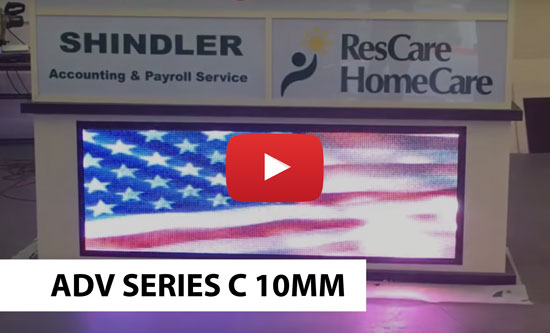True Pixel vs Virtual Pixel
“Virtual Pixel”
-calculating resolution by doubling the actual number of pixels on a given screen and then multiplying by the number of LEDs per pixel. This marketing term is called enhanced resolution, by way of pixel sharing.
Background Information
Let us try to help you analyze exactly what is “virtual pixel” technology and is it true that “virtual pixel” doubles the real resolution of your display. Unfortunately, suppliers that offer “virtual pixel” displays do not always provide real information on the use and functions of “virtual pixels”. They assure buyers that LED screen models with virtual pixels will have higher resolution than similar models with true pixel.
In the majority of cases virtual pixel proves to be just a marketing gimmick. There is nothing new in this technology and small advantages are balanced by deficiencies which suppliers do not disclose to their clients.
* Simply put, to achieve higher resolution add more LEDs to a given screen size. Technology does not allow to increase resolution, without adding LEDs. This is the foundation of LED signage, the more LEDs a screen has the better the resolution. Companies try to use marketing ploys to convince consumers to purchase lower resolutions at higher cost.
Technical Breakdown
In a “virtual pixel” mode one screen pixel contains information on four pixels of the initial image. The image projected on a screen has doubled resolution in each dimension compared to a physical resolution of a video screen. This usually leads people to falsely conclude that screen resolution also doubles which is not exactly true. In fact, one screen pixel can hold and display all information from the initial four pixels. Part of the information gets lost. Again suppliers who offer “virtual pixel” display commonly leave out
this information.
Let’s say that the initial information (with resolution twice higher than physical screen pixel resolution) looks as a horizontal green line (one pixel thick) on a black background If the line appears on an even row of pixels, the video screen will display a corresponding green line. But if the line shifts to an odd row of pixels, it will simply disappear: the video screen will remain black. In other words, smaller details and sharp color borders shall be displayed with distortions (artifacts) which are not evident in an initial image.
Conceptually, “virtual pixel” is an attempt to smooth out digital image (interpolation algorithms) as displayed on a screen. However, there are no universal interpolation algorithms: different types of images require different algorithms. As a result, application of a virtual pixel mode becomes inadvisable.
“Virtual pixel” technology is easy to misuse, which results in the loss of even more information. Actually, virtual pixel technology on large screens appeared a long time ago. It was first adapted on lamp screens (made of bulbs) where it was called bulb-mode. Lamp Screens had significantly lower resolution and significantly bigger pixel size. Naturally, developers tried to smooth the image edges to improve
image quality.
Conclusion
When comparing manufacturers ask for the true pixel matrix when comparing sign specifications. This will allow you the opportunity to make an educated buying decision based on facts, not manufacture marketing opportunities.




